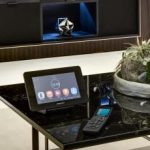Improve your Overall Viewing Experience with an Updated Digital Projection System
There are many benefits to having a home theater system. For one thing, there is no dealing with the hassle of going to a cinema and all the issues associated with it such as standing in line, finding a parking spot, and paying for overpriced food. While the cinema industry has been consistent when it comes to innovating the viewing experience and has stayed ahead of home entertainment, in recent times there have been signs of a turning tide. Home entertainment is not only catching up when it comes to the technology available to the consumer at a decent price but also as far as actual entertainment goes with streaming services providing hours upon hours of movies and TV series.
When it comes to having custom digital projection and improving the viewing experience, it’s important to understand the different types of projectors and how each system acts. The two most common types are DLP and LCD projectors. Cathode ray tubes (CRT) projectors were also common in the early days of projectors, but they are no longer used for a number of reasons such as their large size and low light output.
DLP or digital light processing projectors are either one-chip or three-chip. Each chip has millions of mirrors which reflect lights thousands of times per second. The three-chip DLP projectors are able to produce over 35 million colors, while the one-chip ones produce over 16 million. This technology allows DLP projectors to reproduce lifelike and more natural images. The image is more fluid and crisp compared to the LCD technology as a result of the closeness of the mirrors in a chip. This makes it difficult to notice the spaces that separate pixels.
In the opposite corner, the other most commonly used projector is the LCD one, which works by using polarized mirrors which pass and reflect certain colors of light. This technology separates the red, green, and blue channels. These are re-converged later through a prism after they pass through an LCD panel which is controlling the saturation and intensity of each color.
Both types have their advantages. On the one hand, DLP technology is lightweight, provides high contrast, and has a lack of pixelation. Meanwhile, LCD technology is efficient, the brightness and contrast are easily adjustable, and the projector offers high image resolution. There is more info here to help you make your decision.
Picking out the “right” digital projection system depends mostly on the distance between the screen and the projector itself, the screen size (especially the width), and the amount of ambient light that is present in the room where the projector will be used. In order to improve your viewing experience, these factors should not be taken lightly.
Brightness is rated in lumens, and the higher the value the more potentially bright the image will be. Determining the surroundings and the amount of light that is in the room will determine the type of brightness that a projector will need. With projection on a small screen in a small room, a projector with up to 3,000 (and as little as 1,500) lumens can show good results. However, in a larger venue and projected on a large screen or in case ambient light affects the image, a three-chip DLP projector might be necessary with a lumen rating of up to 28,000.
It’s worth noting that high lumens do not guarantee excellent viewing quality. While projectors with higher brightness might sound more versatile, in reality, for home theater systems it’s recommended that consumer pick out the projector that has the appropriate amount of brightness in order to enjoy the clearest image with the best contrast effect and color performance. Instead of looking for high lumens, the brightness of the projection must be controlled in an appropriate range in order to increase color accuracy.
When seeking to update the viewing experience, taking control of the light in the room is an aspect that needs attention. Home theater projectors, black levels, and darkness are not projected on the screen as they are the result of the absence of light. Thus, light that might leak into the room will end up affecting the brightness and the contrast of the image. This can all be fixed by simple installing black-out curtains, which are backed with a material that won’t let through any light and will make the room as dark as a theater. While a simple solution, this can have a dramatic effect on the quality of the picture and thus make for a better viewing experience.










